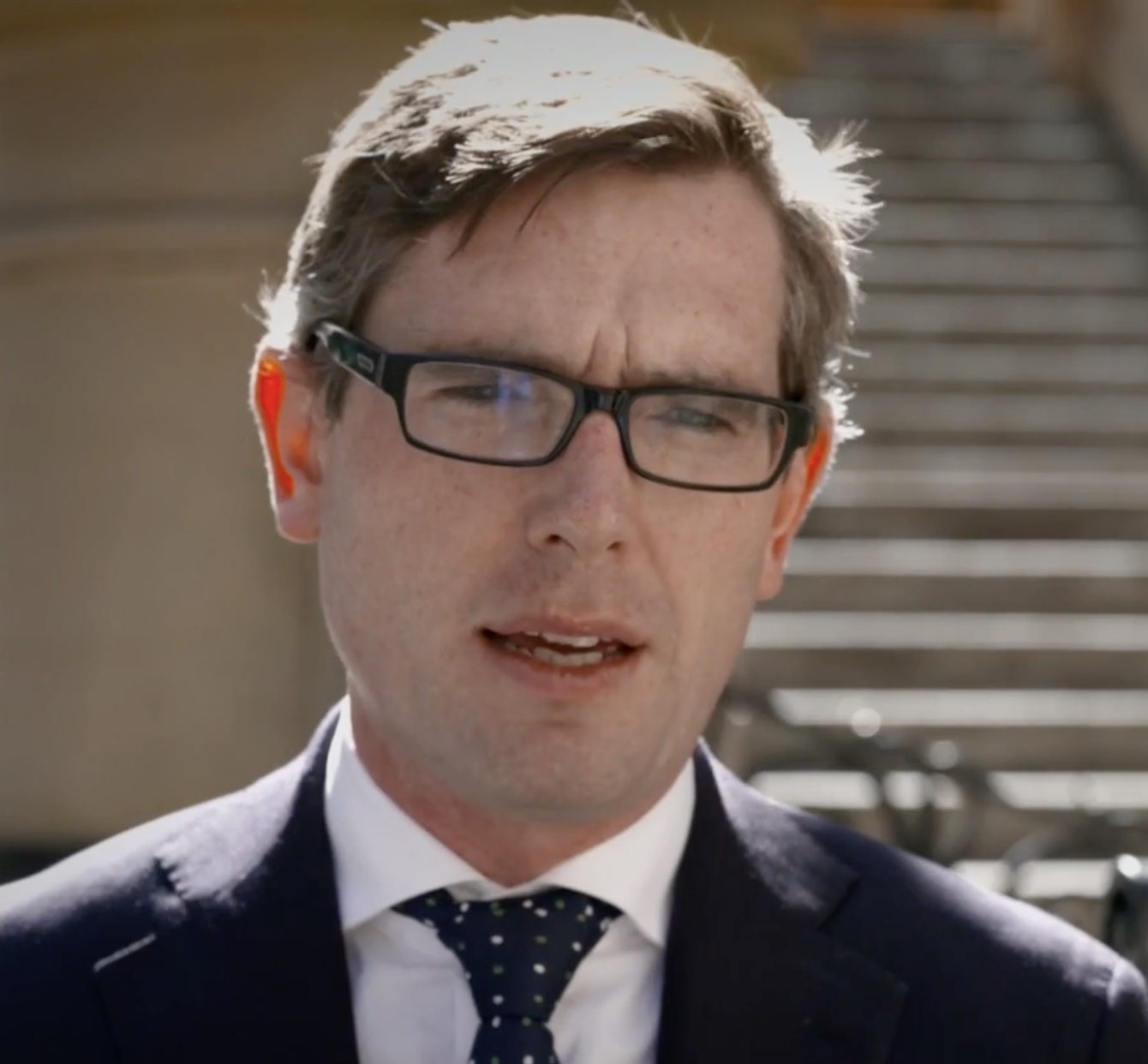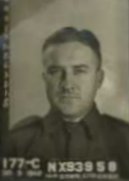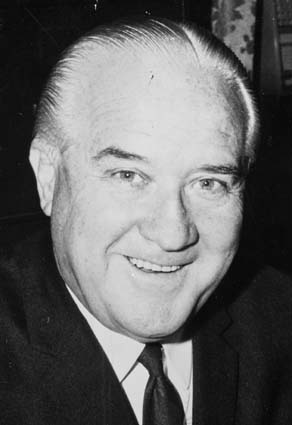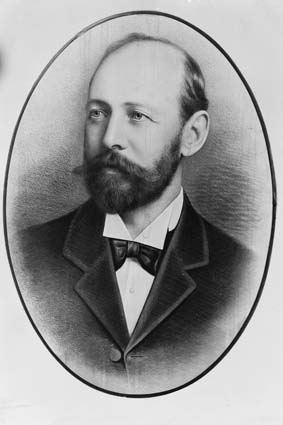|
Renshaw Ministry
The Renshaw ministry was the 61st ministry of the New South Wales Government, and was led by the 31st Premier, Jack Renshaw, of the Labor Party. The ministry was the only occasion when the Government was led by Renshaw, as Premier. Renshaw was elected to the New South Wales Legislative Assembly in 1941 and served continuously until 1980, representing the seat of Castlereagh. Having served as the Secretary for Lands in the third McGirr ministry, Renshaw was promoted as the Secretary for Public Works and Minister for Local Government in the first and second Cahill ministries. He then served as the Minister for Local Government and the Minister for Highways in the third and fourth Cahill ministries. When Bob Heffron became Premier in 1959, Renshaw was elected as his Deputy, serving variously as the Treasurer, the Minister for Lands, the Minister for Agriculture, and the Minister for Industrial Development and Decentralisation in the first and second Heffron ministries. When H ... [...More Info...] [...Related Items...] OR: [Wikipedia] [Google] [Baidu] |
New South Wales Government
The Government of New South Wales, also known as the NSW Government, is the Australian state democratic administrative authority of New South Wales. It is currently held by a coalition of the Liberal Party and the National Party. The Government of New South Wales, a parliamentary constitutional monarchy, was formed in 1856 as prescribed in its Constitution, as amended from time to time. Since the Federation of Australia in 1901, New South Wales has been a state of the Commonwealth of Australia, and the Constitution of Australia regulates its relationship with the Commonwealth. Under the Australian Constitution, New South Wales, as with all states, ceded legislative and judicial supremacy to the Commonwealth, but retained powers in all matters not in conflict with the Commonwealth. Executive and judicial powers New South Wales is governed according to the principles of the Westminster system, a form of parliamentary government based on the model of the United Kingdom. Legisla ... [...More Info...] [...Related Items...] OR: [Wikipedia] [Google] [Baidu] |
Bob Heffron
Robert James Heffron (10 September 189027 July 1978), also known as Bob Heffron or R. J. Heffron, was a long-serving New South Wales politician, union organiser and Australian Labor Party (New South Wales Branch), Labor Party Premier of New South Wales from 1959 to 1964. Born in New Zealand, Heffron became involved in various Socialist and labour movements in New Zealand and later Australia before joining the Australian Labor Party. Being a prominent unionist organiser, having been gaoled at one stage for "conspiracy to strike action", he was eventually elected to the Parliament of New South Wales for Electoral district of Botany, Botany in 1930. However his disputes with party leader Jack Lang (Australian politician), Jack Lang led to his expulsion from the ALP in 1936 and Heffron formed his own party from disgruntled Labor MPs known as the Industrial Labor Party. The success of his party enabled his readmission to the party and his prominence in a post-Lang NSW Branch which wo ... [...More Info...] [...Related Items...] OR: [Wikipedia] [Google] [Baidu] |
William McKell
Sir William John McKell (26 September 1891 – 11 January 1985) was an Australian politician who served as the 12th Governor-General of Australia, in office from 1947 to 1953. He had previously been Premier of New South Wales from 1941 to 1947, as leader of the Labor Party. McKell was born in the small town of Pambula, New South Wales, but grew up in Sydney. He left school at thirteen, training as a boilermaker at Mort's Dock. McKell soon became involved with the union movement, and after a brief period on the railways began working full-time as a union secretary. He sided with the anti-conscriptionists during the Labor Party split of 1916, and at the 1917 state election defeated James McGowen, a former Labor premier who had been expelled from the party. In 1920, aged 29, McKell was Minister of Justice under John Storey. He also served as a minister under John Dooley and Jack Lang. During the Labor Party's internal tensions in the 1930s, McKell came to be seen as a co ... [...More Info...] [...Related Items...] OR: [Wikipedia] [Google] [Baidu] |
Charles Cutler
Lieutenant-Colonel Sir Charles Benjamin Cutler KBE, ED (20 April 1918 – 23 September 2006) was an Australian politician, holding office for 28 years as an elected member of the New South Wales Legislative Assembly for Orange. Cutler was Country Party leader for sixteen years and became Minister for Education and Deputy Premier for ten years under Premiers Robert Askin and Tom Lewis. Early life Charles Cutler was born in Forbes in 1918, the son of George Cutler and Elizabeth Booth Cutler. His cousin, Sir Arthur Roden Cutler, was a Victoria Cross recipient and a long-serving Governor of New South Wales. Charles' ministerial service including as Deputy Premier commenced the year before his cousin's appointment as governor, meaning that Charles was in the cabinet that recommended Roden as governor to the Queen and that later Charles was sworn in as a minister in by his governor cousin. At an early age, Charles moved to the nearby regional city of Orange with his family, w ... [...More Info...] [...Related Items...] OR: [Wikipedia] [Google] [Baidu] |
Robert Askin
Sir Robert William Askin, GCMG (4 April 1907 – 9 September 1981), was an Australian politician and the 32nd Premier of New South Wales from 1965 to 1975, the first representing the Liberal Party. He was born in 1907 as Robin William Askin, but always disliked his first name and changed it by deed poll in 1971. Before being knighted in 1972, however, he was generally known as Bob Askin. Born in Sydney in 1907, Askin was educated at Sydney Technical High School. After serving as a bank officer and as a Sergeant in the Second World War, Askin joined the Liberal Party and was elected to the seat of Collaroy at the 1950 election. Askin quickly rose through party ranks, eventually becoming Deputy Leader following Walter Howarth's resignation in July 1954. When long-serving party leader Vernon Treatt announced his resignation in August 1954, Askin put his name forward to replace him. At the vote, he became deadlocked against Pat Morton and Askin asked his former commanding officer ... [...More Info...] [...Related Items...] OR: [Wikipedia] [Google] [Baidu] |
Coalition (Australia)
The Liberal–National Coalition, commonly known simply as "the Coalition" or informally as the LNP, is an alliance of centre-right political parties that forms one of the two major groupings in Australian federal politics. The two partners in the Coalition are the Liberal Party of Australia and the National Party of Australia (the latter previously known as the Country Party and the National Country Party). Its main opponent is the Australian Labor Party (ALP); the two forces are often regarded as operating in a two-party system. The Coalition was last in government from the 2013 federal election, before being unsuccessful at re-election in the 2022 Australian federal election. The group is led by Peter Dutton, who succeeded Scott Morrison after the 2022 Australian federal election. The two parties in the Coalition have different voter bases, with the Liberals – the larger party – drawing most of their vote from urban areas and the Nationals operating almost exclusively i ... [...More Info...] [...Related Items...] OR: [Wikipedia] [Google] [Baidu] |
National Party Of Australia – NSW
The National Party of Australia – N.S.W., commonly known as "The Nationals" or the NSW Nationals, is a political party in New South Wales which forms the state branch of the federal National Party of Australia, Nationals and has traditionally represented graziers, farmers and rural voters generally. The party has generally been the junior partner in a centre-right Coalition (Australia), Coalition with the Liberal Party of Australia (New South Wales Division), NSW branch of the Liberal Party of Australia. Since 1927, the Nationals have been in Coalition with the Liberals and their predecessors, the Nationalist Party of Australia (1927–1931), the United Australia Party (1931–1943), and the Democratic Party (1943), Democratic Party (1943–1945). During periods of conservative government, the leader of the Nationals also serves as Deputy Premier of New South Wales. When the conservatives are in opposition, the Liberal and National parties usually form a joint opposition bench ... [...More Info...] [...Related Items...] OR: [Wikipedia] [Google] [Baidu] |
Liberal Party Of Australia (New South Wales Division)
The Liberal Party of Australia (New South Wales Division), commonly known as the New South Wales Liberals, is the state division of the Liberal Party of Australia in New South Wales. The party currently governs in New South Wales in coalition with the National Party of Australia (NSW). The party is part of the federal Liberal Party which is in opposition nationally. Following the Liberal Party's formation in October 1944, the NSW division of the Liberal Party was formed in January 1945. For the following months, the Democratic Party and Liberal Democratic Party joined the Liberal Party and were replaced by the new party's NSW division. In the 74 years since its foundation the party has won eight state elections to the Labor Party's 13, and has spent 27 years in office (1965 to 1976, 1988 to 1995 and 2011 to the present) to Labor's 46. Eight leaders have become Premier of New South Wales; of those, five, Sir Robert Askin, Nick Greiner, Barry O'Farrell, Mike Baird and Gladys ... [...More Info...] [...Related Items...] OR: [Wikipedia] [Google] [Baidu] |
1965 New South Wales State Election
The 1965 New South Wales state election was held on 1 May 1965. It was conducted in single member constituencies with compulsory preferential voting and was held on boundaries created at a 1961 redistribution. The election was for all of the 94 seats in the Legislative Assembly. Issues In May 1965, Labor had been in power for 24 years and 56-year-old Jack Renshaw, who had been seen as a generational change for the party leadership, had been premier for one year. Yet Renshaw had difficulty adjusting to a televised campaign; and his manner, the result of spending much of his early life in remote New South Wales, had limited appeal to urban voters. The longevity of the government was an issue promoted by the opposition which described it as being composed of "tired old men"; indeed, six members of Renshaw's cabinet were 65 years old or older, and most of them had been in cabinet during Labor's entire 24-year run in government. Continuing cost overruns and construction delay ... [...More Info...] [...Related Items...] OR: [Wikipedia] [Google] [Baidu] |
Leader Of The Australian Labor Party In New South Wales
The Australian Labor Party (New South Wales Branch), also known as NSW Labor, is the New South Wales branch of the Australian Labor Party. The parliamentary leader is elected from and by the members of the party caucus, comprising all party members in the Legislative Assembly and Legislative Council. The party factions have a strong influence on the election of the leader. The leader's position is dependent on the continuing support of the caucus (and party factions) and the leader may be deposed by failing to win a vote of confidence of parliamentary members. By convention, the premier sits in the Legislative Assembly, and is the leader of the party controlling a majority in that house. The party leader also typically is a member of the Assembly, though this is not a strict party constitutional requirement. Barrie Unsworth, for example, was elected party leader while a member of the Legislative Council. He then transferred to the Assembly by winning a seat at a by-election. W ... [...More Info...] [...Related Items...] OR: [Wikipedia] [Google] [Baidu] |
Heffron Ministry (1962–1964)
__NOTOC__ The Heffron ministry (1962–1964) or Second Heffron ministry was the 60th ministry of the New South Wales Government, and was led by the 30th Premier, Bob Heffron, of the Labor Party. The ministry was the second of two consecutive occasions when the Government was led by Heffron, as Premier. Heffron was first elected to the New South Wales Legislative Assembly in 1930 and served continuously until 1968, representing the seats of Botany and Maroubra. Having served continuously as Minister for Emergency Services in the first McKell ministry, and Minister for Education in the second McKell ministry, and in the first, second, and third ministries of Jim McGirr, and then the first, second, third and fourth ministries of Joseph Cahill. Heffron served as Deputy Premier to Cahill between 1953 and 1959 until Cahill died in office on 22 October 1959. The following day, Heffron was elected as Labor Leader and became Premier. Heffron led Labor to victory at the 1962 state ... [...More Info...] [...Related Items...] OR: [Wikipedia] [Google] [Baidu] |
Heffron Ministry (1959–1962)
__NOTOC__ The Heffron ministry (1959–1962) or First Heffron ministry was the 59th ministry of the New South Wales Government, and was led by the 30th Premier, Bob Heffron, of the Labor Party. The ministry was the first of two consecutive occasions when the Government was led by Heffron, as Premier. Heffron was first elected to the New South Wales Legislative Assembly in 1930 and served continuously until 1968, representing the seats of Botany and Maroubra. Having served continuously as Minister for Emergency Services in the first McKell ministry, and Minister for Education in the second McKell ministry, and in the first, second, and third ministries of Jim McGirr, and then the first, second, third and fourth ministries of Joseph Cahill. Heffron served as Deputy Premier to Cahill between 1953 and 1959 until Cahill died in office on 22 October 1959. The following day, Heffron was elected as Labor Leader and became Premier, retaining Cahill's ministry intact. He had b ... [...More Info...] [...Related Items...] OR: [Wikipedia] [Google] [Baidu] |



.jpg)


